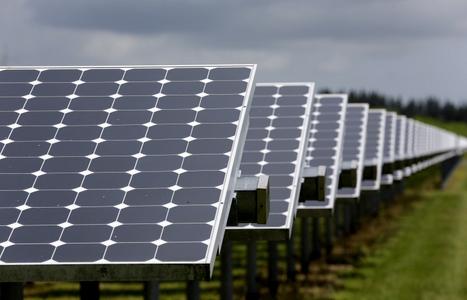Next year, Russia will begin production of solar cells based on Alferov heterostructures

In 2016, Russia will start production of solar panels on semiconductor heterostructures. The developers promise that the efficiency of such panels will be twice as high as the existing ones, and the cost will be two times less. Zhores Ivanovich Alferov himself, the Russian winner of the Nobel Prize in Physics, received for the development of semiconductor heterostructures, took part in the development of the concept.
“The invention of Zhores Ivanovich will be the basis of the second generation of research and development for mass production of Russian solar cells,” said Yevgeny Terukov, head of the laboratory of the physicochemical properties of semiconductors at the Physicotechnical Institute. AF Joffe (PTI RAS), Deputy General Director of the Scientific and Technical Center for Thin-Film Technologies in Power Engineering. “This became possible due to the fact that China collapsed the market for silicon, the most important component of semiconductor heterostructures. He fell from $ 200 to $ 20, equaling the cost of glass. "
According to Terukov, with the current technology of manufacturing solar panels, a thin layer of silicon is deposited on a glass substrate. The efficiency of the resulting panel is 10-12%, and with a lifetime of 20-25 years and a guarantee of 20 years, it pays off in 10-12 years. If to replace glass with crystalline silicon using Alferov's semiconductor heterostructures, the cost of manufacturing the panel is halved, and the efficiency increases twice. As a result, the economic efficiency of the panel increases 4 times.
')
New solar batteries are supposed to be used to create autonomous power supply systems with a capacity of 100 kW and in places remote from power grids - in Siberia, Altai, the Far East, as well as to create solar power stations with a capacity of 10 MW in the same regions, as well as Caucasus and Crimea, - said Terukov.
Academician Alferov returned to experimental physics and, in particular, engaged in the improvement of solar cells. In addition to the Nobel Prize, he has an impressive number of awards. In particular, in 1996 he received the AF Ioffe award for the series of works "Photoelectric solar radiation converters based on heterostructures."
"The practical goal of our research is to increase the efficiency of solar cells and new principles for the implementation of integrated circuits," said Alferov. “The efficiency of solar panels is growing, in 10–15 years, photoelectricity will become very cost-effective, and by the middle of the 21st century it can displace the energy from burning hydrocarbons and nuclear power."
Source: https://habr.com/ru/post/368191/
All Articles